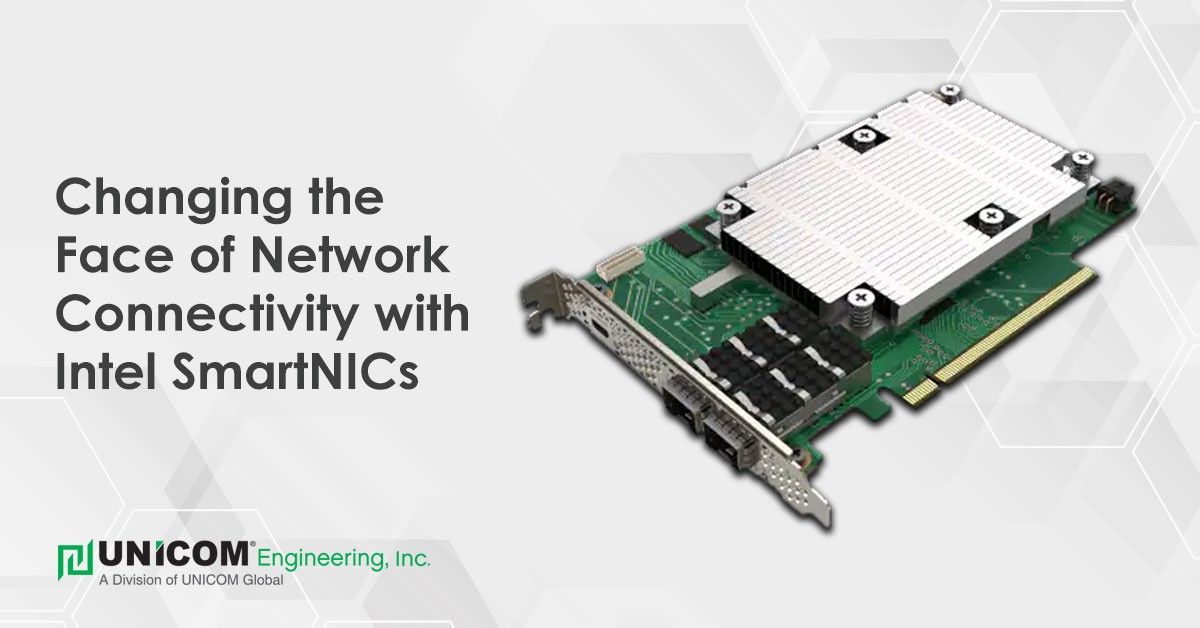Today's modern infrastructure enables us to reach almost every corner of the world with ever-improving network connectivity. However, for telecom providers, the challenge remains to generate additional revenue streams with newer services.
One such opportunity is "last mile" connectivity—the link between a customer's location and the telecom's local central office (CO). With the help of the latest Field Programmable Gate Array (FPGA) and SmartNIC technology from Intel, this challenge is about to be addressed.
Overcoming Bandwidth & Speed Challenges with Intel FPGA
For decades, telecoms have been limited by the traditional wireline bandwidth they could deliver to a customer's building. So, despite the speed of a provider's overall network, customers could only experience the bandwidth allowed by their building's physical connection.
At the same time, individuals have enjoyed, over the years, ever-improving mobile data and network connectivity. What's more, with today's growing 5G network, mobile connections are finally starting to rival broadband speed. But, until now, broadband and 5G have never been leveraged together into one service.
Intel FPGA-Powered FMC: The Solution for Enhanced Connectivity
Thanks to Intel's latest family of FPGA-enhanced NICs, and the expertise of its OEM partners, a viable solution is here. It combines the customer's broadband and 5G connections into an intelligent, high-performing solution for CO connectivity.
These cutting-edge network interface cards enable FMC with technologies such as access gateway functions (AGF), software-defined networking (SDN), network function visualization (NFV), and user plane function (UPF).
With servers running Intel SmartNICs, customers can leverage a variety of new technologies, including virtual broadband network gateway (vBNG), segment routing over IPv6, carrier-grade network address translation, virtual firewall, IP security (IPsec), transport layer security (TLS), and packet monitoring and analytics.
Example of Telecom Configurations
A typical medium-density CO might, for example, run a server outfitted with one of Intel's FPGA-based SmartNICs. Conversely, a high-density solution may include a server with an onboard SmartNIC and a white box switch running an Intel Tofino application-specific integrated circuit (ASIC). The latter solution would provide terabit P4 level programmable UPF, AGF, and BNG.
Advantages of Intel FPGA Tech in SmartNICs
By powering their latest generation of SmartNICs, Intel FPGAs offer the following benefits:
OEM Support
To make deployment as simple as possible. Intel has partnered with OEMs like UNICOM Engineering that provide design, deployment, and support.
Portability
Intel's FPGAs fit seamlessly into their extensive ecosystem of products. Therefore, hardware and software solutions designers can ensure that each hardware component leverages the other to its fullest extent.
Intel OFS
Intel's Open FPGA Stack, aka Intel OFS, provides software and hardware infrastructure via git repositories. With it, telecom providers can customize their NICs to meet the needs of various deployments and provide the scalability that comes with standardization.
Exploring Intel's FPGA-Powered SmartNIC Portfolio
Intel offers a variety of connectivity-enhancing cards to service the needs of telecom, cloud, and core data center deployments:
Intel FPGA PAC N3000t
In support of high-bandwidth, low-latency, 5G solutions, this SmartNIC can accelerate traffic up to 100 Gbps. Overall, these capabilities enable better-virtualized radio access network applications or vRANs.
INTEL FPGA PAC D5005
Known previously as the Intel PAC with Intel Stratix 10 SX FPGA, this SmartNIC offers up to 100 GBPS of inline high-speed interfaces. It's designed to support workloads in the data center like financial calculations, streaming analytics, artificial intelligence, and genomics.
INTEL PAC with INTEL ARRIA 10 GX FPGA
This programmable acceleration card offers both lookaside and inline acceleration. Its versatility and performance allow it to support solutions across multiple market verticals, including artificial intelligence, big data, video transcoding, genomics, financial transactions, and cybersecurity.
Silicom FPGA SmartNIC N5010 Adapter
This hardware programmable 4x100GE FPGA-accelerated SmartNIC can enable the latest Intel architecture servers to run the latest firewalls. As a result, telecom companies can run IPSec and segment routing version 6 (SRv6).
INVENTEC FPGA IPU C5020X Adapter
This IPU is designed to enable cloud service providers to offload storage and vSwitch infrastructure using a Storage Performance Development Kit (SPDK) and a Data Plane Development Kit (DPDK). It features an Intel Xeon D processor + FPGA and provides a hardware programmable data path with 50G connectivity.
Ready to Accelerate Your Solution with Intel technology and UNICOM Engineering?
As an Intel Technology Provider, UNICOM Engineering has helped drive the latest solutions with our partners for decades. Our skilled team actively builds the latest solutions based on 4th Gen Intel Xeon Scalable processors, Intel Optane persistent memory 200 series, Intel SmartNIC and Ethernet 800 Series Network Adapters, and Intel Optane SSDs. Our customers benefit from solutions optimized for telecom, cloud, enterprise, network, security, IoT, and HPC workloads with expanded I/O, storage, and network connectivity options by leveraging our services. Learn more about how UNICOM Engineering can help you transition to next-gen solutions by scheduling a consultation.
